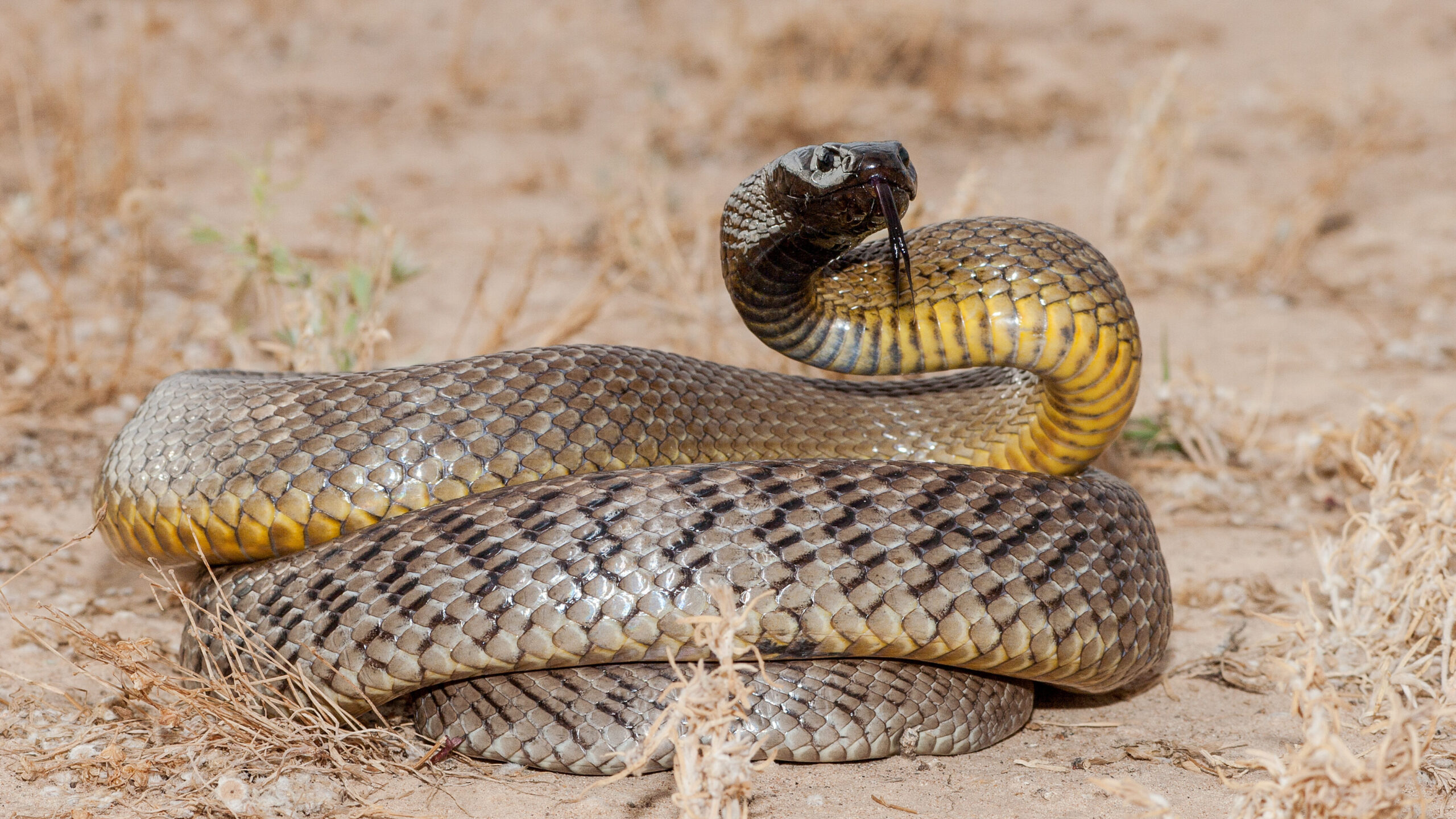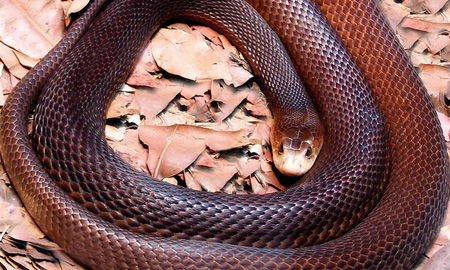Introduction
When it involves snakes in Australia, two of one of the most well-known varieties are the Eastern Brown Snake and the Tiger Snake Both are extremely venomous and can present serious hazards to human beings, specifically when they are young and less seasoned. In this write-up, we're diving right into the distinctions in between infant Eastern Brown Snakes and infant Tiger Snakes, providing a detailed summary that incorporates their habitats, habits, looks, and extra. Recognizing these crucial differences is not simply academically intriguing; it is vital for safety and awareness in areas where these reptiles are prevalent.
Baby Eastern Brown Snakes vs. Baby Tiger Snakes: Trick Differences Explained
Overview of Infant Eastern Brown Snakes
The baby Look at this website Eastern Brown Serpent (taxonomic name: Pseudonaja textilis) is among one of the most harmful snakes in Australia because of its potent venom and hostile nature. Recognizing its characteristics can be life-saving.
Physical Characteristics of Baby Eastern Brown Snakes
Baby Eastern Brown Snakes typically measure around 20-- 30 centimeters at birth. They have a slender body with smooth ranges that may show up glossy. Their pigmentation varies from light brown to dark brown or even blackish tones.
- Coloration: Generally lighter than adults, children may display unique patterns or markings. Head Shape: They have a slightly more comprehensive head compared to their necks.
Habitat of Child Eastern Brown Snakes
These snakes prefer a selection of habitats consisting of metropolitan locations, meadows, woodlands, and even seaside areas. They thrive where there is sufficient cover and enough food supply.
yellow face whip snake- Urban Areas: Often located in gardens or parks. Natural Habitats: Generally populate bushland near agricultural lands.
Behavioral Characteristics of Infant Eastern Brown Snakes
Baby Eastern Browns are known for their quick reflexes and defensive behavior. When threatened, they will certainly commonly act aggressively.
- Defensive Posture: Expanding their bodies while hissing. Speed: Remarkably fast for both evasion and assaulting prey.
Venom Effectiveness of Baby Eastern Brown Snakes
The venom of a child Eastern Brown Snake is incredibly powerful. It includes neurotoxins that can bring about paralysis or perhaps death if untreated.
Symptoms of Eastern Brown Snake Bite
- Pain at the bite site Nausea Confusion Difficulty breathing
First Help for Snake Bites from Infant Eastern Brown Snakes
If bitten by a baby Eastern Brown Serpent, instant emergency treatment is crucial:
Call emergency solutions immediately. Keep the victim calmness; activity increases poison spread. Apply a stress plaster over the bite website to decrease venom transmission. Immobilize the influenced limb.Overview of Baby Tiger Snakes
On the various other hand, we have the infant Tiger Serpent ( Notechis scutatus), which likewise carries large dangers as a result of its venomous bite and variable temperament.
Physical Characteristics of Infant Tiger Snakes
Typically born around 20-- 30 cm long also, baby Tiger Snakes have unique banding patterns along their bodies that can vary substantially in shade from olive green to black.
- Coloration: The characteristic bands provide their name; however, some may show up extra evenly colored. Body Shape: More durable than the slender Eastern Browns.
Habitat of Baby Tiger Snakes
Tiger snakes favor coastal areas however can also be located inland near swamps or wetlands where they hunt for amphibians and fish.
- Wetlands: Their main habitat as a result of plentiful food sources. Coastal Areas: Frequently seen basking on rocks near water bodies.
Behavioral Traits of Child Tiger Snakes
While generally much less hostile than their eastern counterparts when young, infant Tiger Snakes can still present significant danger when cornered or threatened.
- Defensive Mechanisms: Known for flattening their bodies when feeling threatened. Hunting Techniques: Ambush killers that utilize stealth rather than speed.
Venom Potency of Baby Tiger Snakes
The poison from a baby Tiger Serpent consists of neurotoxins too yet is likewise hemotoxic, impacting blood coagulation leading to serious inner bleeding if left untreated.
Symptoms of Tiger Snake Bite
Unlike bites from an eastern brown snake:
- Initial pain can be come with by swelling. Possible bleeding at injuries or gums.
First Aid for Snake Bites from Baby Tiger Snakes
Like with an eastern brown snake bite:
Call emergency solutions immediately. Avoid activity; keep the sufferer still. Educating about venomous snakes Apply a stress bandage over the bite location to limit blood flow. Immobilize the limb while waiting for clinical assistance.Comparison Table
|Feature|Baby Eastern Brown Snake|Infant Tiger Snake|| -------------------------------|------------------------------------|------------------------------------|| Length|20-- 30 centimeters|20-- 30 centimeters|| Coloration|Light/dark brownish|Olive green/black with bands|| Habitat|Urban areas & & meadows|Coastal regions & & wetlands|| Behavior|Aggressive & & defensive|Much less hostile yet will protect|| Venom Kind|Neurotoxic|Neurotoxic + hemotoxic|| Emergency Treatment Approach|Stress plaster & & immobilization|Pressure bandage & & immobilization|
Frequently Asked Inquiries (FAQs)
What makes baby Eastern Brown snakes dangerous?
Baby Eastern Browns have very potent venom that contains neurotoxins efficient in causing paralysis or death if neglected immediately. Their aggressive nature contributes to their threat as they often tend to react defensively when approached.


Are all tiger snakes venomous?
Yes! All tiger serpents carry poison that is dangerous to people; however, their temperament often tends to be less aggressive compared to various other types like the eastern brown serpent unless prompted or cornered.
How do I determine a baby tiger snake?
A juvenile tiger serpent commonly has pronounced banding patterns across its body which might differ in shade from olive eco-friendly to dark brownish-black tones relying on its environment location-- seaside locations often show much more dynamic colors than inland specimens.
What ought to I do if attacked by either snake?
Call emergency solutions immediately! In both instances-- whether attacked by an eastern brown or tiger serpent-- keeping still and using a stress bandage above the bite mark while awaiting medical aid can save lives by slowing down contaminant absorption into your bloodstream.
Can I deal with snake bites at home?
It's highly advised against dealing with serpent attacks at home because incorrect methods might aggravate conditions! Always seek specialist medical interest asap complying with any type of thought snakebite incident!
Where do these snakes primarily live?
Baby eastern browns often tend towards city atmospheres such as gardens while infant tiger serpents prefer swamps near seaside regions with adequate access food sources like frogs and fish!
Conclusion
Understanding the distinctions between baby Eastern Brown Snakes and infant Tiger Snakes is not merely an academic workout-- it's important for security in areas where these serpents prevail. Both species exhibit special physical traits, behaviors, habitats, and degrees of poison toxicity that need various approaches relating to first aid treatment after attacks take place.
Knowing just how each species behaves can assist mitigate risks connected with encounters while improving understanding about Australia's varied wildlife landscape-- a crucial part of living sympathetically within this magnificent ecosystem!

In summary, whether you're treking through bushland or delighting in outside tasks in urban setups across Australia-- stay alert! Knowledge genuinely is power when it comes down protecting on your own against possible dangers lurking within our all-natural world!
By maintaining notified concerning species like Pseudonaja textilis and Notechis scutatus, you're taking positive steps in the direction of making certain not just your very own safety and security but also promoting respect in the direction of these remarkable creatures that share our planet!